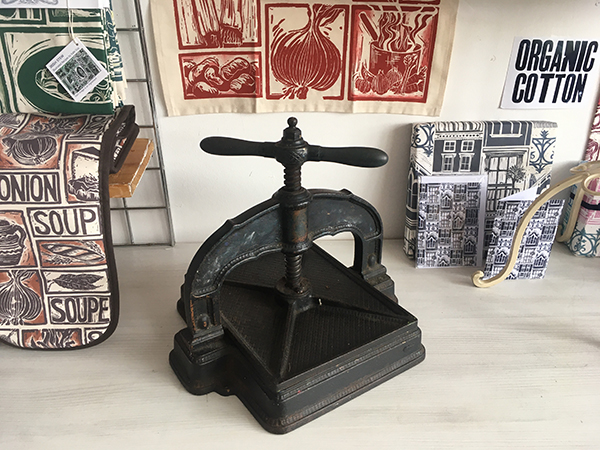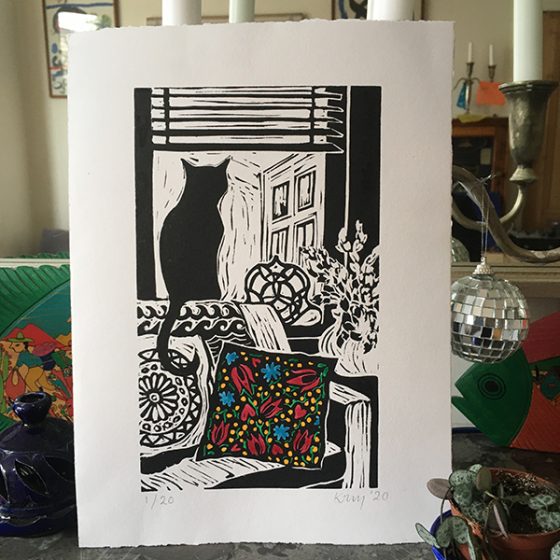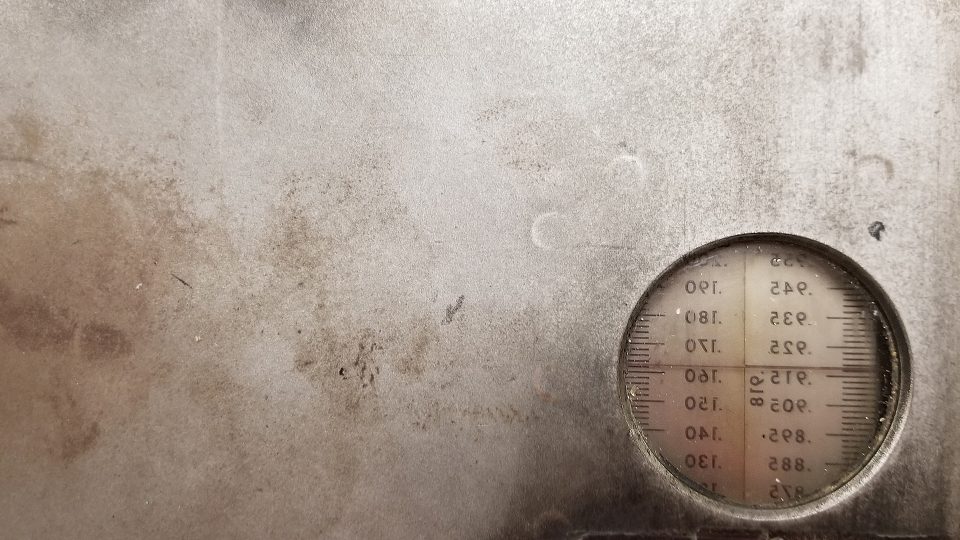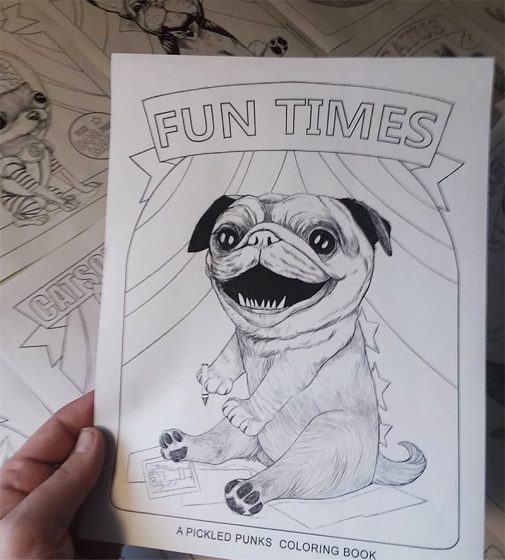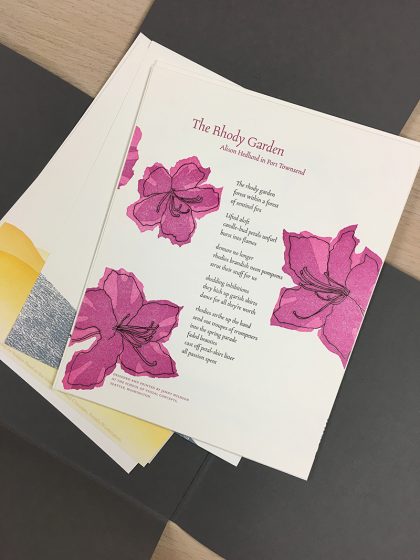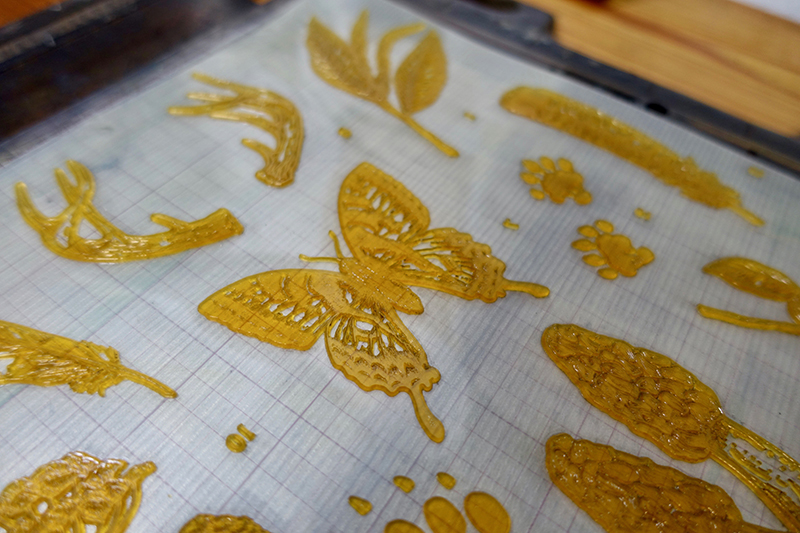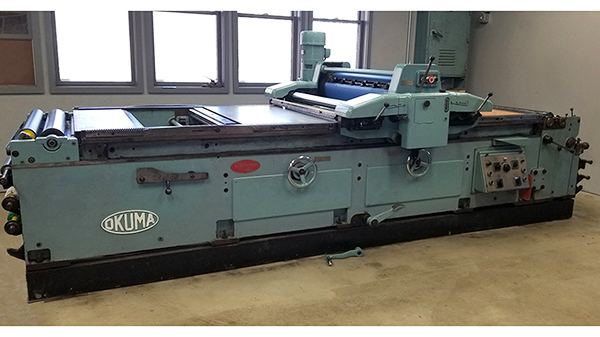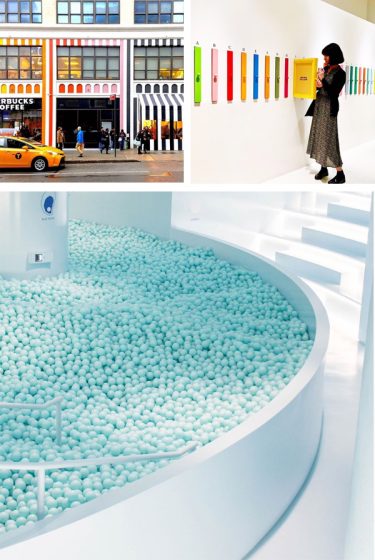It is always a treat to share the joy and delight of the Seattle Children’s Hospital Broadside collection. The colorful stories and broadside prints are a testament to the hearty spirits of the participants. They include: the folks at the Writers in the Schools program working with the children at the Seattle Children’s Hospital, and the letterpress printers of Partners in Print (formerly part of the letterpress family at Seattle’s School of Visual Concepts – SVC). Together, this collaboration crafts memorable letterpress broadsides of poetry.
At Boxcar Press, we are honored every year to be a part of this project. This first installment of a two-part blog covers the 2020 edition of the Portfolio, titled I Know What It Means to Be Brave. Read on about three printers who share the love through wood and metal type, aligning the stars (literally) while on press, and more.
Bonnie Thompson Norman
We usually know very little about the poets whose poems we have chosen to print. We go by the feeling or inspiration we take from reading and re-reading the poems. I was drawn to Darian Parker’s poem because it felt like a benediction. The young man was 16 when he wrote his poem. I wanted to create something that felt a little more ‘grown-up’ by using a palette that seemed rather more sophisticated than child-like.
In the poem, he thanks someone for giving him a second chance. One infers from the text that Darian is the recipient of a transplant. I placed circular shapes at the top and bottom of the broadside, one in a grey, the other in a golden color to give the feeling that he had gone from a dark place to one that was much lighter. Darian’s poem recites how he is thankful for the gift he has received. I tried to convey the feeling of that second chance by having a large golden shape seem to be rising from the bottom of the broadside as in a sunrise. I find his poem to be a beautiful expression of gratitude and it moves me each time I read it.
The type for this broadside is all handset using both metal and wood types. The metal types are 18 point Albertus and 8 point Bernhard Gothic Light. The wood type is 8 line. I used both linoleum and ⅛” plastic for the circular shapes and printed the broadside on both a Vandercook SP 15 and a 10 x 15 Chandler & Price. The text for the poem went on the Vandercook as well as the title because these were large forms. The shapes, poet’s name and age, and the colophon were printed on the C&P. Using two presses makes it easier to move along in the production of the piece. While printing, I slip-sheeted each broadside so that the ink would not offset from the front of one sheet to the back of the next because there was so much ink coverage. I left the slip sheets in until after I had done the final trim.
Due to COVID-19, we were not able to gather together as a group to create the portfolios. I bound all of them in my home studio on my own. Gathering to bind the portfolios is a wonderful process for all of the printers. It is an enjoyable chance to visit with one another, talk about our work on our broadsides,and catch up on everything else as well. It wasn’t difficult for me to bind the portfolios by myself as I have been a commercial hand binder for a number of years but I did miss our camaraderie.
My co-leader in the binding of the Children’s Hospital broadside project over the years has been Jules Remedios Faye. Jules chose the color scheme for this year’s portfolio and created the beautiful letterpress printed label for the front cover. After all of the portfolio covers were completed, I used the entire table surface of my studio to collate the broadsides. It is always a wonderful opportunity to see all of them together and marvel at the originality and creativity that each designer/printer brings to the text of their poet. Instead of our usual wrap-up for this project when we have gotten together to read the poems out loud and talk about our design process, I was able to hand off each printer’s portfolio individually as they came to my house (safely!) to collect their copy. It was both a celebration to deliver a complete portfolio and an affirmation that we can continue to do good and meaningful work despite the challenges we faced.
Robin Kessler
My poem is “Powerful Things” by Jazee Holloway (her first name is pronounced JUH-zay and rhymes with sauté).
This poem has many images, and as usual for me, I really dithered over how to illustrate them. In the end, I went with my love of wood type and decided to highlight the words as image.
Because of the pandemic, our options for printing on a Vandercook at SVC or other printers’ studios became very limited. So I decided to print this broadside at home, hand-inking the edition of 110 on my 14” x 24” sign press. I’m retired, and all my usual activities had been cancelled, so what the heck – I had plenty of time!
(I use Caligo Safe Wash ink, which I thicken with magnesium carbonate)
I used my limited but beloved collection of wood and metal type for the background, and inked it in two colors. Some of the prints have a graduated or ombre look, but I abandoned that after a while. I printed the backgrounds over the course of 3 days – this is a VERY variable edition!
The text, title, and colophon are photopolymer from Boxcar. I was afraid I wouldn’t get a crisp print for the black text, but it worked out fine. I think I also spent 3 days printing the black run.
This was a satisfying experience in “making do” with what is at hand. I’m lucky to have a couple small presses and a bit of type at home. As always, it’s an honor to participate in the Children’s Hospital Broadside project. We had our final celebration via Zoom in September – it was wonderful to see all the prints and share our printing trials and triumphs.
Carol Clifford
I have worked with constellation imagery in two previous broadsides for Children Hospital poems. I enjoy the challenge and the depth of color you can get when creating a nighttime sky. Plus, I am a fan of using gold metallic ink and it works nicely when printed on top of a dark color. In “Constellations” I appreciated the imagery Dylan was conjuring up with the many constellations.
I thought about how best to present the poem to this young poet. I had the good fortune this summer to camp under the stars for 6 nights and I thought of how I could convey this experience to Dylan. When I go camping I love the fact that the sky doesn’t have the light pollution we have in the city. I wanted to capture that awesomeness we rarely get to experience. I wanted Dylan to feel the expanse of a clear, pollution-free starry night. I added the dark silhouette of a figure with binoculars at the bottom to not only provide a sense of perspective but to also show a curiosity to see more than what you can see with the naked eye.
I began working on the ideas for this piece shortly after picking the poem in March. However, when the pandemic began, I found myself constantly distracted and struggling to find the headspace to focus. I was relieved when a new deadline was set for August because it allowed me to get my head back in the game and provided a pleasant diversion from the big picture.
I had budgeted just the minimum amount of time to order plates (3), have them arrive in 2 days (I still find that turnaround time a miracle), print, wait for the broadsides to dry, trim, and deliver. Every day counted. I did not allow any time for mishaps and so when there was a shipping glitch, just like that I was behind schedule. A hearty thank you shout out to Boxcar who helped me in my 12th hour. They offered to resend at least the first plate (they sent the first two!) to help me stay on schedule and I was able to because of their thoughtfulness! It takes a village.
Once I was on course to print, the process, thankfully, went smoothly. This wasn’t so much a happy accident as it was just a huge relief. It doesn’t always go as smoothly. The stars must have aligned for me this year (pun intended).
Stay tuned for Part 2 of the 2020 Children’s Broadsides project! We would like to thank all of the young writers & their families, printers, and organizers who help make the 2020 Broadsides project one of enchantment and spirit. You can view all of the prints from all the years at the Partners In Print website here.





